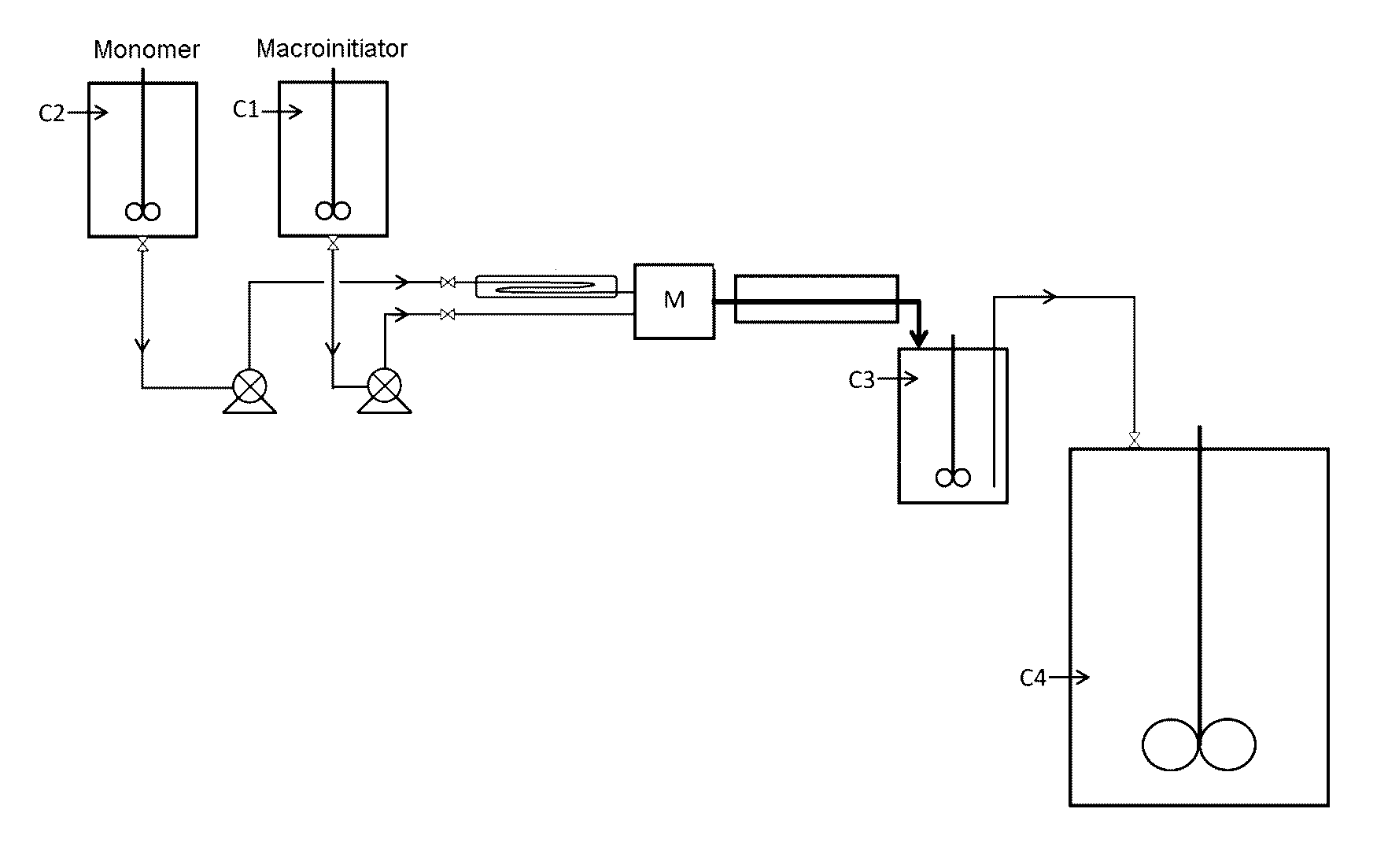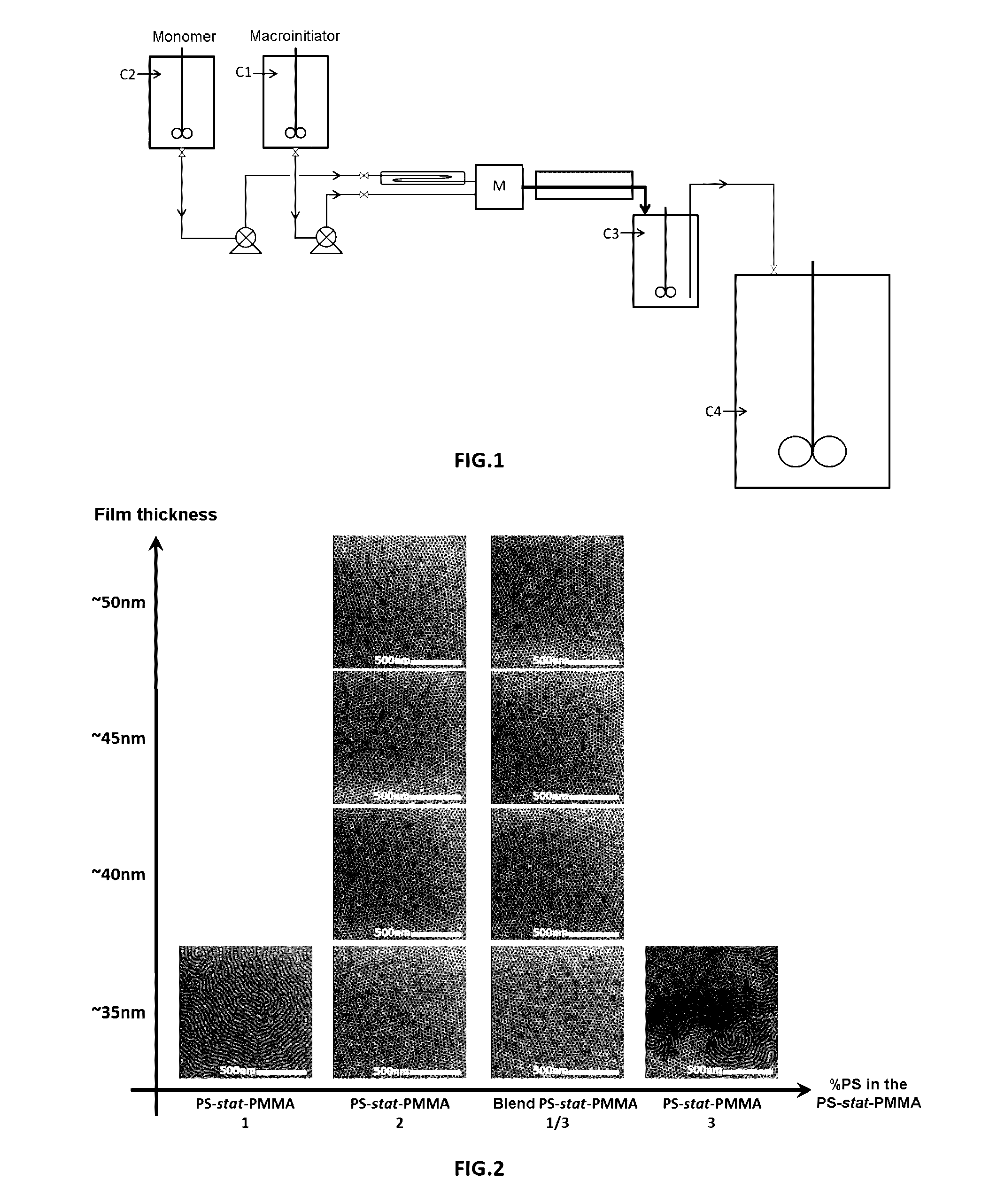Process for the control of the surface energy of a substrate
a technology of surface energy and substrate, which is applied in the field of preparation of the surface of the substrate, can solve the problems of difficult reencounter, inability to synthesize a copolymer with a given system of comonomers, and inability to meet the needs of conventional lithography techniques
- Summary
- Abstract
- Description
- Claims
- Application Information
AI Technical Summary
Benefits of technology
Problems solved by technology
Method used
Image
Examples
example
Synthesis of the Statistical Copolymers
[0085]1st stage: Preparation of a Hydroxy-Functionalized Alkoxyamine (Initiator) from the Commercial Alkoxyamine BlocBuilder®MA (initiator 1):
[0086]The following are introduced into a 1l round-bottom flask purged of nitrogen:[0087]226.17 g of BlocBuilder®MA (1 equivalent)[0088]68.9 g of 2-hydroxyethyl acrylate (1 equivalent)[0089]548 g of isopropanol.
[0090]The reaction mixture is heated at reflux (80° C.) for 4 h and then the isopropanol is evaporated under vacuum. 297 g of hydroxy-functionalized alkoxyamine (initiator) are obtained in the form of a very viscous yellow oil.
[0091]2nd stage: Preparation of Polystyrene / Polymethyl Methacrylate Copolymers
[0092]Toluene and also the styrene (S), the methyl methacrylate (MMA) and the initiator are introduced into a stainless steel reactor equipped with a mechanical stirrer and a jacket. The ratios by weight between the different monomers styrene (S) and methyl methacrylate (MMA) are described in Table ...
PUM
| Property | Measurement | Unit |
|---|---|---|
| polydispersity index | aaaaa | aaaaa |
| molar mass | aaaaa | aaaaa |
| molar mass | aaaaa | aaaaa |
Abstract
Description
Claims
Application Information
 Login to View More
Login to View More - R&D
- Intellectual Property
- Life Sciences
- Materials
- Tech Scout
- Unparalleled Data Quality
- Higher Quality Content
- 60% Fewer Hallucinations
Browse by: Latest US Patents, China's latest patents, Technical Efficacy Thesaurus, Application Domain, Technology Topic, Popular Technical Reports.
© 2025 PatSnap. All rights reserved.Legal|Privacy policy|Modern Slavery Act Transparency Statement|Sitemap|About US| Contact US: help@patsnap.com



